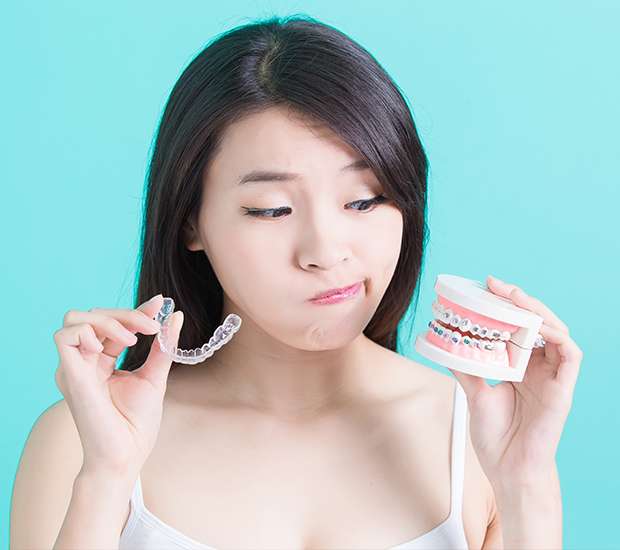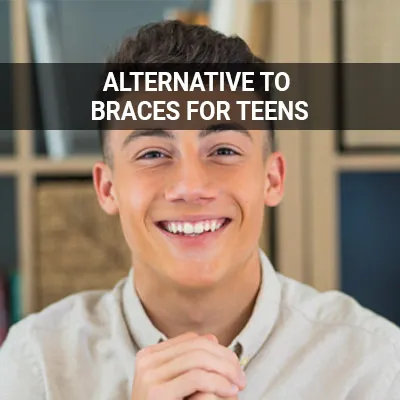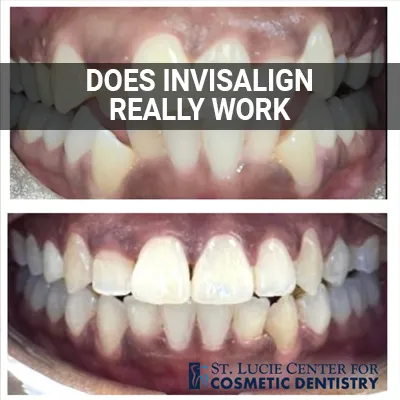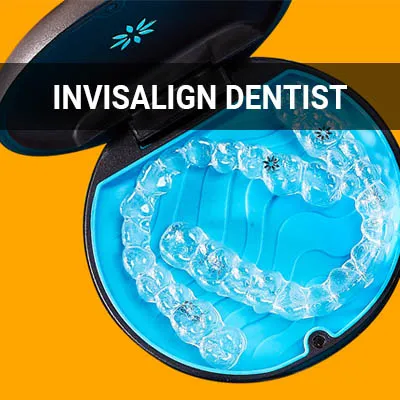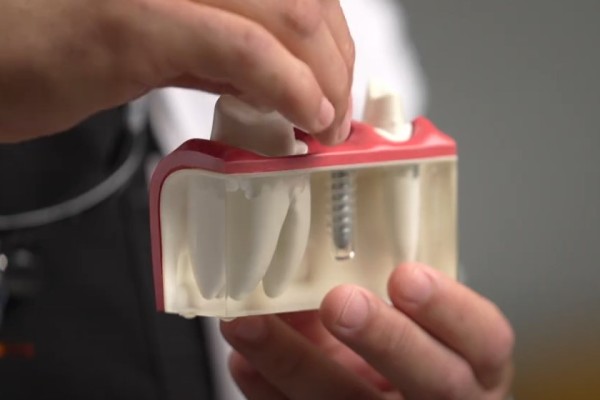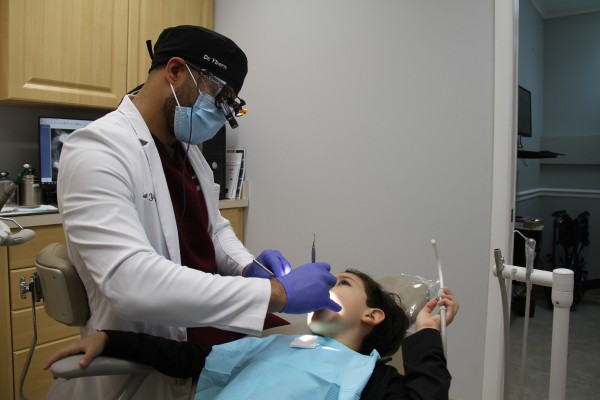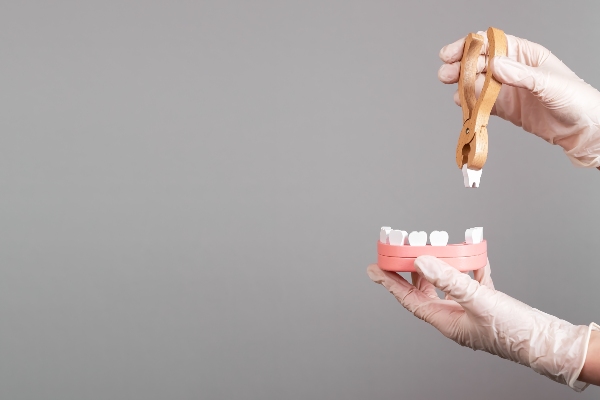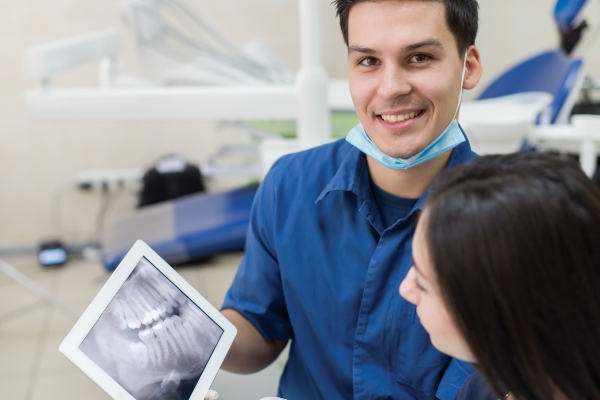Which is Better Invisalign or Braces Fort Pierce, FL
When it comes to orthodontic treatments, many parents find themselves unsure of which option is the best choice for their child's health. Straight teeth do more than reveal a beautiful smile — they enhance the patient's overall oral health. Straight teeth remain easier to clean (thus avoiding unwanted cavities). Orthodontic treatment options also correct bites, helping align the teeth and jaw. Two of the most popular options for straightening teeth include traditional metal braces and Invisalign.
While both traditional metal braces and Invisalign lead toward the same result, there are differences that can make treatment for a child's teeth more challenging. The difference remains within the process of how each type of treatment straightens the teeth. Thus, the question is more about which treatment is best for my child's teeth? While the answer varies per patient, it is a good idea to weigh the advantages and disadvantages of both before coming in for an evaluation.
Fort Pierce Smiles in Fort Pierce is here to help make the right decision for your child's dental needs. Call us at (772) 232-7073 to schedule a consultation.
Invisalign vs. Other Orthodontic Options
Invisalign involves wearing a series of clear, plastic aligners that gently move teeth into alignment over time. Since the aligner trays are clear, they are virtually invisible compared to other orthodontic options. Patients who prefer more discreet orthodontic appliances can feel less self-conscious while wearing Invisalign.
Other orthodontic treatments, such as braces, utilize wires and brackets that may consist of various materials from ceramic to metal. These appliances require more frequent appointments than Invisalign so that patients can have their wires and brackets adjusted or replaced. While Invisalign treatment for mild non-extraction cases is faster than with fixed appliances, it requires more time for more complex cases, according to a study in Progress in Orthodontics.
“Patients who prefer more discreet orthodontic appliances can feel less self-conscious while wearing Invisalign.”
Effectiveness
The choice between braces and Invisalign depends largely on preference and the issue that needs correcting. The success rate of Invisalign depends on patient adherence — they must wear the trays to enjoy the benefits of a straighter smile. The trays should be worn for at least 22 hours a day for the treatment to be successful or go as desired.
Braces have also produced positive results in many individuals because of their durability and strength. Individuals with complex dental issues may require metal braces in order to align their teeth. For those with complex dental issues or worry about self-discipline in ensuring continued wear of the trays, metal braces may be a better option. With braces, patients can straighten their teeth without the worry of keeping track of the trays or cleaning them frequently.
“The choice between braces and Invisalign depends largely on preference and the issue that needs correcting.”
Invisalign for Specific Conditions
Invisalign can be helpful for those with mild to moderate dental issues. Treatable cases through Invisalign treatment include overbites, underbites, cross bites, gapped teeth, open bites, crowded teeth, and mixture of baby and permanent teeth. However, each case differs under each of these treatments, and some cases may be too complex to treat with Invisalign.
Complex dental issues requiring traditional metal braces include, but are not limited to, early, late, or irregular loss of baby teeth; delayed eruption of adult teeth; teeth that do not meet at all; missing or extra teeth; incorrect jaw positioning; jaw-clicking; jaw-joint disorder; and respiratory or eating issues. During the consultation appointment, an orthodontist is able to fully understand the patient's case, in combination with other factors, and make a professional suggestion for the appropriate treatment type. In some cases, the patient may qualify for either treatment and be able to choose themselves.
“Invisalign can be helpful for those with mild to moderate dental issues.”
Check out what others are saying about our dental services on Yelp: Which is Better Invisalign or Braces in Fort Pierce, FL
Possibility of Regression After Treatment
Regardless of whether a patient straightens their teeth with Invisalign or braces, teeth have a tendency to shift out of place. Once patients complete their active orthodontic treatment and no longer use their appliance, their teeth will want to move back to their original position. For this reason, patients must wear a retainer.
Retainers are fixed or removable appliances that keep teeth in place after orthodontic treatment. They apply pressure to teeth and provide guidance to keep teeth in their new position. It is a common problem for patients to lose their retainers. We recommend that patients keep their retainers in a protective case when not in use and closely follow our instructions.
“Regardless of whether a patient straightens their teeth with Invisalign or braces, teeth have a tendency to shift out of place.”
Questions Answered on This Page
Q. Are braces or Invisalign aligners more effective?
Q. What conditions can Invisalign treat?
Q. What is the difference between Invisalign and other orthodontic options?
Q. Is there a possibility that teeth can regress after orthodontic treatment?
Q. Are there any necessary dietary restrictions while wearing Invisalign?
People Also Ask
Q. Should I choose Invisalign Teen for my child?
Q. How do clear aligners save time straightening?
Q. How long is treatment time with traditional braces and Invisalign?
Q. What are the requirements for candidacy?
Q. How can someone find the right Invisalign Dentist?
Q. What are the aesthetic differences between braces and Invisalign?
Dietary Restrictions
Invisalign aligners straighten teeth without the dietary restrictions associated with braces. Since these aligners are removable, patients do not have to make any major dietary restrictions. While patients with braces must avoid eating crunchy, chewy, sticky, or hard foods, Invisalign wearers are free to have the foods and beverages they want as long as they remove their aligners beforehand.
However, eating or drinking with Invisalign aligners can cause damage and lengthen the orthodontic treatment time. Dark beverages such as coffee, tea, and wine can also stain aligners, negating their virtually invisible appearance. Eating with aligners or drinking hot beverages can also cause the plastic trays to warp and become misshapen.
“Since these aligners are removable, patients do not have to make any major dietary restrictions.”
Frequently Asked Questions About Braces Versus Invisalign Teen
Q. How long will I have to wear Invisalign?
A. The length of treatment will vary for each patient and their individual needs. However, the average length of Invisalign treatment is 12 to 18 months. While simple cases will take less time, more complex orthodontic issues will require more extensive treatment.
Q. How much does Invisalign cost?
A. The cost of Invisalign will vary depending on factors, including the patient's treatment needs and insurance plan. Every insurance plan is different. People interested in Invisalign should contact their insurance provider for coverage information before seeking treatment.
Q. Will Invisalign interfere with my lifestyle?
A. Unlike other orthodontic options, Invisalign fits easily into people's lifestyles. The clear, plastic aligners are nearly invisible, so patients do not feel self-conscious during treatment. Patients can also remove their aligners when eating, brushing, flossing, or on special occasions as long as they wear them for 20 to 22 hours a day.
Q. Does Invisalign hurt?
A. Invisalign does not usually hurt. However, it can cause some minor pain or discomfort as the trays apply pressure to teeth to move them into alignment. These feelings are normal and will typically disappear within a few days after switching out a set of clear aligners.
Q. How can I clean my Invisalign aligners?
A. Patients can use the Invisalign Cleaning System or a soft-bristled toothbrush to clean their aligners. We also recommend soaking aligners to remove any bacteria present. Patients should also brush after every meal or snack to prevent food residue from getting trapped in their aligners and staining them.
Invisalign® Terminology
Learn More About Braces Versus Invisalign Teen
If you would like to discuss whether to use traditional braces or Invisalign Teen for your child, call Fort Pierce Smiles in Fort Pierce at 772-232-7073 for more information.
Helpful Related Links
- American Dental Association (ADA). Glossary of Dental Clinical Terms. 2024
- American Academy of Cosmetic Dentistry® (AACD). Home Page. 2024
- Invisalign®. How Invisalign Works. 2024
- Invisalign®. Take the Smile Assessment. 2024
- WebMD. WebMD’s Oral Care Guide. 2024
About our business and website security
- Fort Pierce Smiles was established in 2023.
- We accept the following payment methods: American Express, Cash, Check, Discover, MasterCard, Visa, Care Credit, Sun Bit, iCreditWorks, and In house financing
- We serve patients from the following counties: St. Lucie County
- We serve patients from the following cities: Fort Pierce, Fort Pierce South, White City, Fort Pierce North, St Lucie, Okeechobee, Hutchinson Island, and Vero Beach
- Norton Safe Web. View Details
- Trend Micro Site Safety Center. View Details
Back to top of Which is Better Invisalign or Braces
